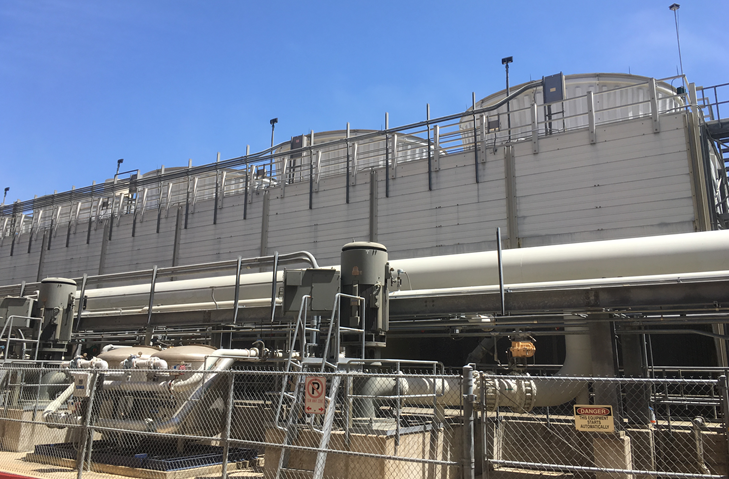On April 17th, LL.M. students toured the UT power plant. Often described as the largest and most integrated microgrid in the U.S., the UT Austin Carl J. Eckhardt Combined Heat and Power plant (CHP) is capable of generating 135 MW (megawatt) power (63 MW peak) and 1.2 million lb/hr (pounds per hour) of steam (300,000 peak). The single largest electrical load on campus is the cooling system that can provide 60,000 tons (33,000 tons peak) of chilled water to the campus.
The Power Complex provides 100 percent of campus electricity and heating. Our five chilling stations and 9.5 million gallons of chilled water in two thermal storage tanks satisfy the cooling requirements for 17 million square foot in more than 150 campus buildings serving 70,000 faculty, students and staff. The complex provides the university with an independent utility system, with electrical ties to the City of Austin electrical grid as an emergency backup source of power.
Operating as a CHP and district energy system, the university is able to function at a much greater reliability and efficiency than that afforded through purchased energy. Typical power plants generate waste heat which is not used for electricity production and is generally expelled, either into the atmosphere through cooling towers or into local reservoirs. A CHP facility is able to convert this heat into useful work, such as space heating and hot water, thereby converting around 80 percent of the energy into useful work.
After the tour, Mexican LL.M. student Antonio Barrera Rios observed “UT’s power plant is a great example of planning and understanding the infrastructure needs and projects of the university. The manager of the plant took the time to explain how the plant works and answer all the questions the visitors made. The visit gave us the opportunity to understand UT better, especially the benefits and importance of resources management.”


